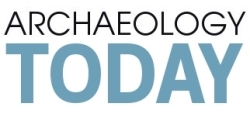
February 23rd, 2014
New Evidence Suggests That Neandertals Buried Their Dead
Around 60,000 years ago, in a small limestone cave in what is now central France, Neandertals dug a grave and laid an elderly member of their clan to rest. That is the picture emerging from the archaeological site that yielded the famous La Chapelle-aux-Saints Neandertal skeleton in 1908, and it has important implications for understanding the behavior and cognitive capacity of our closest evolutionary relatives. Some archaeologists have long argued that a number of Neandertal sites preserve evidence of burials, a practice considered to be a key feature of modern human behavior. But critics have countered that the sites were excavated long ago using outmoded techniques that obscure the facts. (Scientific American)
Researchers Claim Discovery of America’s Oldest Fort
In an announcement likely to rewrite the book on early colonization of the New World, two researchers today said they have discovered the oldest fortified settlement ever found in North America. Speaking at an international conference on France at Florida State University, the pair announced that they have located Fort Caroline, a long-sought fort built by the French in 1564. (Heritage Daily)
Picture Gallery: Skulls, tools and cremations from 9,000 years of London archaeology
More than 50 archaeological finds, including skulls from Roman London, a Roman cremation pot, flint used by Londoners 9,000 years ago and items found in a suspected Black Death Plague burial ground are about to go on show at Crossrail’s site at Tottenham Court Road in London. (Culture 24)
Experts unearth ancient murder victim in East Lothian
Archaeologists have discovered a 900-year-old murder victim during a dig at the Scottish Seabird Centre in East Lothian. They found the skeleton of a young man dating from the 12th or 13th Centuries while investigating Kirk Ness, which was the site of a North Berwick church. Analysis revealed he was fatally stabbed four times in the back, twice in the left shoulder and in the ribs. The archaeologists said he was over the age of 20. (BBC News)
Quake-hit ancient city of Tralleis being restored
Robbed of its place in the annals of history by a series of earthquakes, the ancient city of Tralleis is set to regain some of its former glory with a number of restorations that are expected to bring in tourists. (Hurriyet Daily News)
Richard III DNA tests to reveal hair, eyes and diseases of the King
Otzi the Iceman, Neanderthal specimens, a Denisovan and a Greenlandic Inuit and a hunter gatherer from Spain make up the small and ancient cast to have had their genomes sequenced. Now Richard III will join them, with Dr Turi King, of the Department of Genetics at the University of Leicester, set to analyse the hair, eyes and genetic fallibilities of the king found under a car park. (Culture24)
Dating refined for Atapuerca site where Homo antecessor appeared
One of the issues of the Atapuerca sites that generates the most scientific debate is the dating of the strata where the fossils are found. A study has clarified that the sediment of Gran Dolina, where the first remains of Homo antecessor were discovered in 1994, is 900,000 years old. The findings at the Lower Palaeolithic cave site of Gran Dolina, in the Sierra de Atapuerca mountain range (Burgos), have led to major advancements in our knowledge of human evolution and occupation of Eurasia. (Science Daily)



